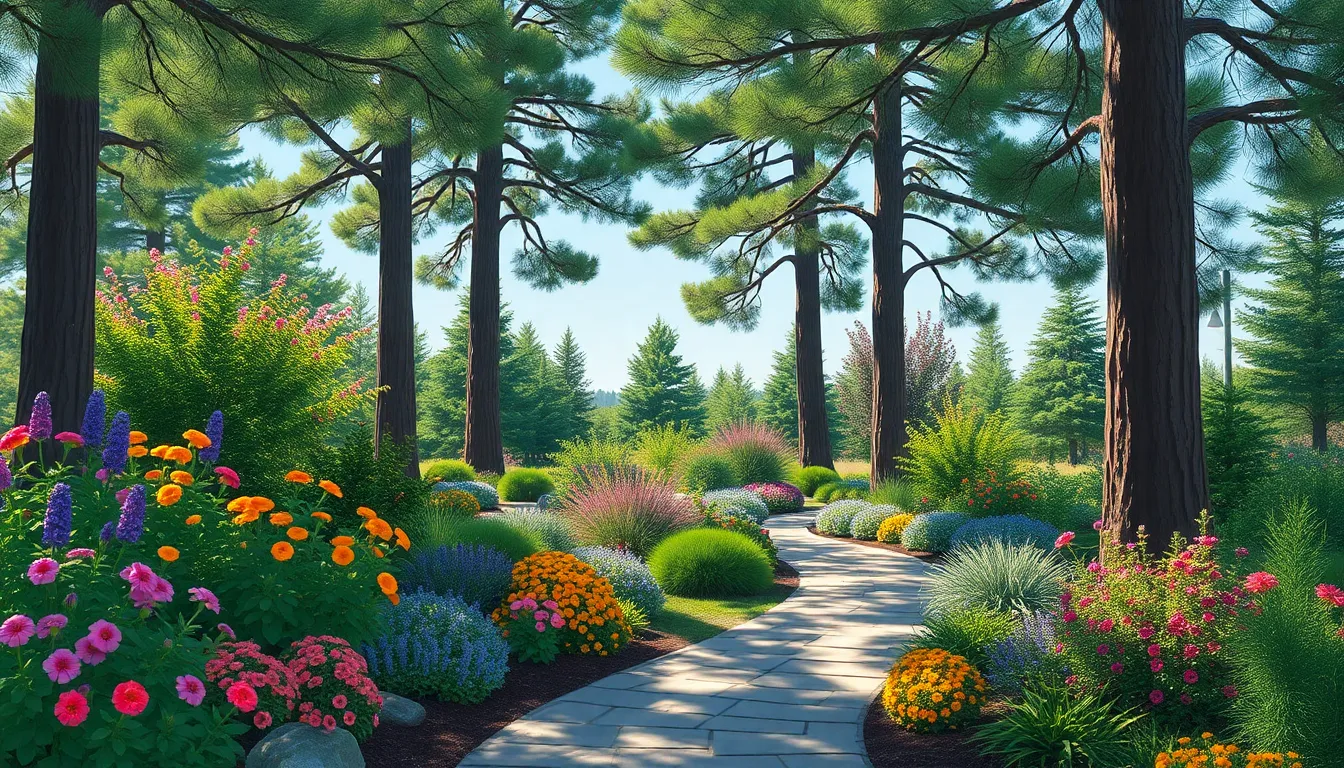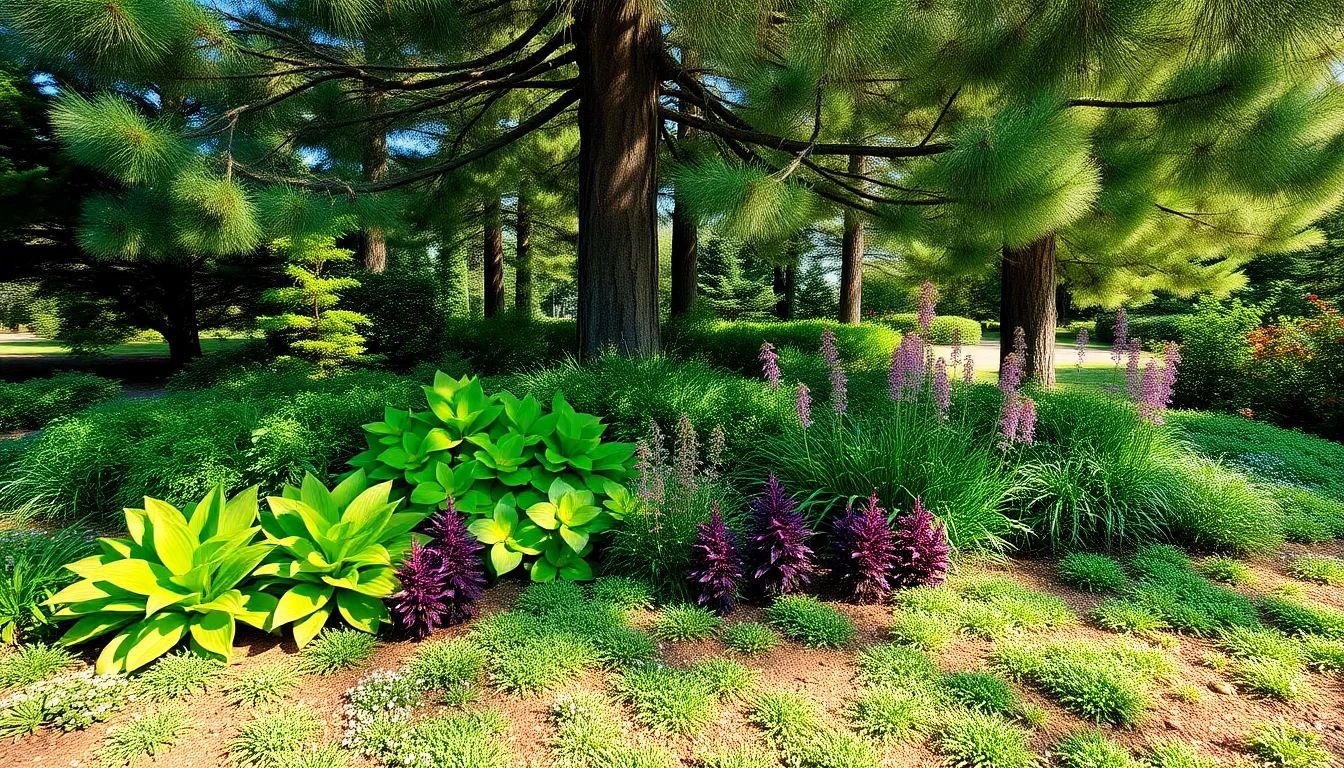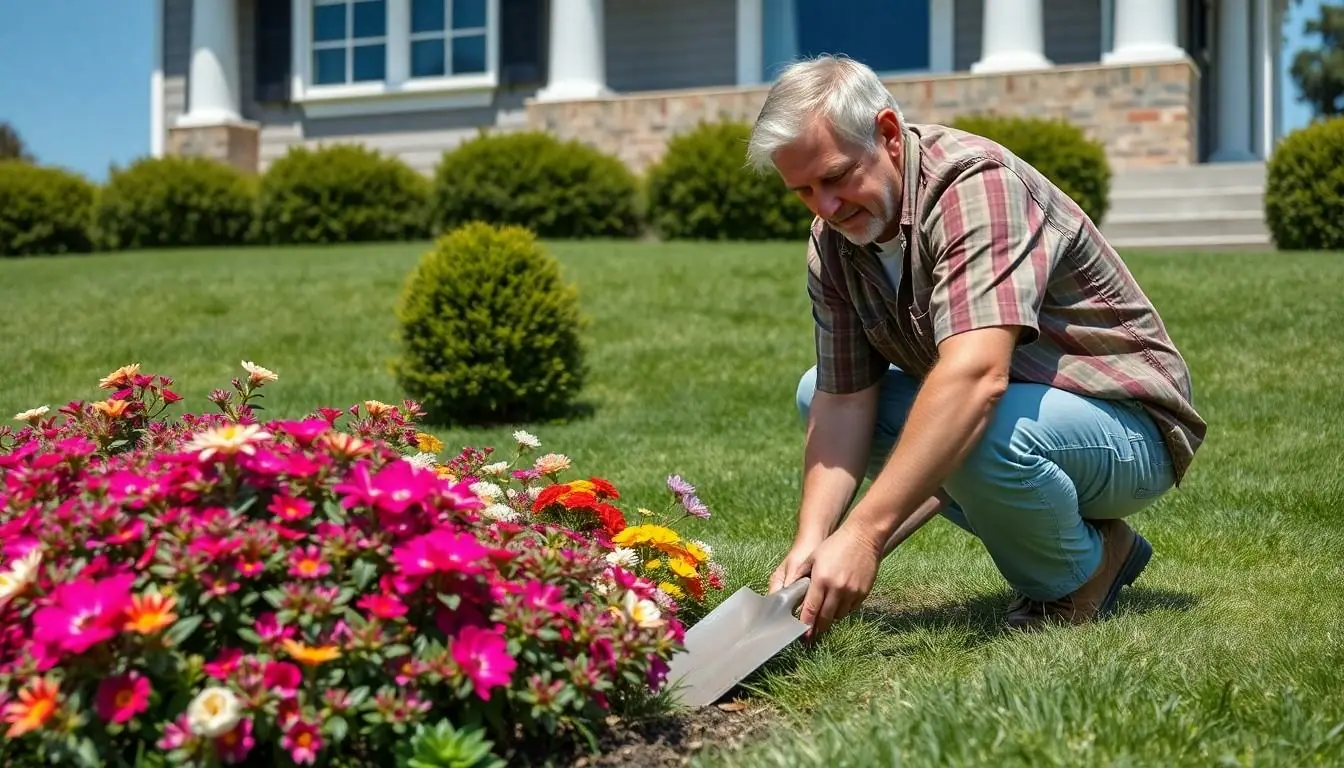Imagine transforming that shady patch under your pine trees into a vibrant oasis instead of a barren wasteland of pine needles and shade. Landscaping under these towering beauties might seem like a challenge, but it’s an opportunity waiting to sprout! With a little creativity and the right plants, you can turn that neglected space into a stunning retreat that even the squirrels will envy.
Table of Contents
ToggleUnderstanding Pine Trees and Their Environment
Pine trees thrive in diverse environments, shaping their growth characteristics and landscaping possibilities. These coniferous trees, known for their distinctive needle-shaped leaves, demonstrate remarkable adaptability.
Growth Characteristics of Pine Trees
Pines exhibit a wide range of growth patterns. While some species grow tall and straight, others adopt a more spreading form. Variations occur based on the species, with both dwarf and towering options available. Growth rates also differ, with some pines reaching maturity in 20 years while others take significantly longer. Their root systems, often shallow, seek moisture and nutrients within their immediate surroundings. This characteristic influences the types of plants suitable for growth underneath their canopy.
Soil and Light Conditions
Soil conditions under pine trees often lean towards acidic. Pine needles fall and decompose, contributing to this acidity over time. Sandy or well-drained soils favor pine growth, promoting healthier tree development. Light conditions play a crucial role, as pine trees create shaded areas that vary from partial to heavy shade. Such light variations influence plant selection; shade-tolerant plants succeed where sun-loving varieties struggle. Choosing the right plants, based on these soil and light dynamics, ensures a thriving landscape beneath the pines.
Benefits of Landscaping Under Pine Trees

Landscaping beneath pine trees offers unique advantages that enhance both aesthetics and ecology. Creative plant selections thrive in these areas, turning shaded spots into inviting landscapes.
Aesthetic Appeal
Visual interest increases with layered plantings under pine trees. Diverse shrubs and groundcovers create a lush, vibrant environment. Bold colors and textures from shade-tolerant flowers complement the natural beauty of pine needles. Grouping plants by height adds depth, while paths or stepping stones guide visitors through the landscape. Seasonal blooms provide continuous color, drawing attention and enhancing the overall charm of shaded spaces. The right design transforms what may seem like a barren area into an enchanting garden.
Ecological Advantages
Landscaping under pine trees supports local ecosystems. Native plants attract beneficial insects and wildlife, fostering biodiversity. Organic matter from pine needles enriches the soil, improving moisture retention and creating a nutrient-rich environment. Planting for erosion control stabilizes the ground, preventing soil runoff. Shade-tolerant plants help maintain cooler temperatures in the landscape, reducing the need for additional watering. This environment encourages healthy root systems, leading to robust plant growth and contributing to overall ecological balance.
Suitable Plants for Landscaping Under Pine Trees
Landscaping under pine trees requires selecting plants that thrive in shaded, acidic environments. The right choices create vibrant, dynamic gardens despite challenging conditions.
Shade-Tolerant Perennials
Hostas excel in shaded areas, offering a variety of leaf colors and shapes. Astilbes thrive, producing feathery plumes that add texture and softness beneath tree canopies. Ferns, such as Japanese painted ferns, provide graceful foliage, enhancing the overall aesthetic. Lungworts work well for their attractive spots and early spring blooms. Each plant contributes unique qualities, ensuring a diverse landscape that captures attention year-round.
Ground Covers and Low-Growing Plants
Creeping thyme thrives in areas with partial shade, providing a fragrant, mat-like carpet. Vinca minor, also known as periwinkle, establishes itself quickly, showcasing delightful blue flowers. Sedum, particularly sedum sediforme, offers a low-maintenance option with succulent leaves. Ajuga, or bugleweed, creates dense ground cover with vibrant purple spikes during spring. Utilizing these ground covers can suppress weeds, retain soil moisture, and create an appealing natural look.
Design Tips for Landscaping Under Pine Trees
Creating a successful landscape under pine trees requires strategic planning and thoughtful execution. Consider the unique conditions these areas present, such as shade and acidic soil.
Layout and Plant Placement
Start by mapping the area, identifying zones with varying light levels. Group shade-tolerant plants together to maximize their growth potential. Arrange taller plants like ferns and astilbes towards the back, while lower-growing species like creeping thyme and ajuga can beautify the front. Place decorative elements, such as benches or boulders, in spots that invite relaxation. Include pathways to provide access for maintenance and enhance visual flow. Vary the plant heights and textures for added depth, ensuring an engaging landscape throughout the seasons.
Mulching and Soil Enhancement
Utilize organic mulch around plants to maintain moisture and suppress weeds. Pine needles make an excellent choice, as they complement the acidic soil environment. Apply a 2 to 4-inch layer of mulch, avoiding direct contact with plant stems to prevent rot. Enhance soil quality by incorporating compost, which improves drainage and adds nutrients. Mix in elemental sulfur if further acidifying the soil is necessary for specific plants. Regular soil testing ensures optimal conditions are maintained, promoting healthy plant growth and sustainability in the landscape.
Maintenance Considerations
Maintaining a landscape under pine trees requires attention to various factors that contribute to plant health and environmental balance.
Watering and Fertilizing
Watering practices need adaptation to the conditions created by pine trees. Establish a consistent schedule to provide moisture since soil may dry out quickly. Early mornings work best for watering to minimize evaporation loss. Fertilizing should be approached with care; using slow-release, organic fertilizers can ensure nutrients slowly feed the plants without overwhelming them. Soil testing determines nutrient levels and adjusts fertilization accordingly. Pine needle mulch also enhances moisture retention and gradually adds organic matter as it decomposes.
Pest Management and Health Care
Pest management focuses on early detection for effective control. Regularly inspect plants for signs of pests or diseases, including discoloration and wilting. Integrated pest management strategies combine natural remedies like insecticidal soaps with encouraging beneficial insects. Some plants naturally repel pests, so incorporating these can help maintain plant health. Regular pruning promotes air circulation and reduces disease risk. Testing for soil health periodically allows for timely interventions, ensuring the plants thrive in their unique environment.
Landscaping under pine trees offers a unique opportunity to create stunning outdoor spaces that thrive in shade. With careful plant selection and thoughtful design, these areas can transform into vibrant retreats that enhance both beauty and ecology. By choosing the right shade-tolerant species and employing effective maintenance strategies, gardeners can cultivate lush environments that support local wildlife and improve soil health. This approach not only revitalizes neglected spaces but also contributes to a more sustainable landscape. Embracing the challenge of landscaping under pine trees can lead to rewarding results that elevate any garden.







